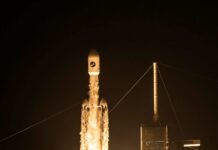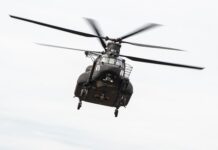Deepening Indo-US ties soared to newer heights with the recent announcement of the US-India Initiative on Critical and Emerging Technologies (iCET), aimed at collaboration in key areas. Covering a wide spectrum from military, strategic, to scientific sectors, though the iCET represents an aligned positioning between both democracies. Strategic experts are largely viewing the initiative as a measure to step up defence against a rising and expansionist China.
Considered as the next big thing in fostering closer Indo-US linkages, the iCET co-led by the Indian National Security Council Secretariat and the American National Security Council represented by the National Security Advisors (NSAs) of both nations, was launched in May 2022 at the Tokyo Quad Summit in a bid to facilitate outcome-oriented cooperation in artificial intelligence (AI), quantum computing, 5G/6G, biotech, space, semiconductors and joint defence production.
Backed by intragovernmental administration, resource sharing, academia, industry outreach, ideation and setting up of an ecosystem, the iCET is likely to boost resilience into a new blueprint for technology diplomacy and statecraft.
The precursor to iCET was the Defence Technology and Trade Initiative (DTTI) established in 2012, and pushed by former US President Barack Obama to foster collaboration in critical defence technologies and promote co-production.
Supporting the initiative, former Indian Ambassador to the US, Meera Shankar, says, “India-US defence ties have strengthened in recent years. However, technological collaboration in the defence sector and in other critical technologies has been somewhat limited. The DTTI has made only modest progress so far. In this context the iCET programme for strengthening India-US collaboration in Critical and Emerging Technologies holds the promise of taking the relationship to the next level.”

The China Factor
The iCET has been called out by strategic watchers as a move towards countering China, a view that was reiterated by the US NSA Jake Sullivan, “The larger challenge posed by China, its economic practices, its aggressive, military moves, its efforts to dominate the industries of the future and control the supply chains of the future have had a profound impact on the thinking in Delhi.”
However, White House Press Secretary Karine Jean-Pierre said that iCET was not just about China, “The President believes this initiative, just laid out, is key for the US and India to create a democratic technology ecosystem, so we see this as an incredibly important initiative and a partnership that we have with India.”
With Beijing’s support to Moscow in the Ukraine-Russia war, the Indo-China border standoff in the Himalayas, and the more recent ‘balloon espionage’ incidents, the technological, economic and military rise of China has undoubtedly acted as a catalyst for US to enhance and shape its strategies and bolster partnerships in the Indo-Pacific, like boosting military bases in Philippines and Japan, reviving cooperation with Pacific island countries, formation of AUKUS and invigorating the Quad with India, Japan and Australia.
The competition for technological dominance between the US and China has sharpened, while the disruption in supply chains caused by the COVID-19 pandemic has driven home the vulnerabilities caused by dependence on a single supplier. Ambassador Shankar added, “De-risking through diversification and ‘friendshoring’ is high on the US agenda. A partnership with India, given its technologically skilled manpower and large market, could help to strengthen America’s competitive edge while advancing India’s capacities in the technologies of the future.”
Indo-US Ties
With the four Indo-US foundational pacts- Basic Exchange and Cooperation Agreement (BECA), Communications, Compatibility and Security Agreement (COMCASA), Logistics Exchange Memorandum of Agreement (LEMOA), and the Industrial Security Agreement (ISA) firmly in place, the defence and security cooperation between both the democracies seems to be increasing and deepening. The total defence trade with India has gone from near zero in 2008 to over USD 20 Bn in 2020. Some recent deals under Foreign Military Sales (FMS) are the MH-60R Seahawk helicopters worth USD 2.8 Bn, Apache helicopters valued at USD 796 M, and the Large Aircraft Infrared Countermeasures (LAIRCM) at USD 189 M.
India also boasts of becoming the first non-treaty partner to be offered a Missile Technology Control Regime Category-1 Unmanned Aerial System – the Sea Guardian UAV manufactured by General Atomics, a deal in its final stages, valued at USD 3 Bn for 30 MQ-9B Predator armed drones. General Atomics is reportedly scouting for an Indian partner, under the ‘Make in India’ initiative. Meanwhile, two American aircraft manufacturing giants, Lockheed Martin with their F-21 fighter and Boeing with their F/A-18 Super Hornet and F-15EX Eagle, are both in competition for the Indian Air Force (IAF)’s future fighter aircraft programme. Both Boeing and Lockheed have partnered with Tata Advanced Systems Limited (TASL) under ‘Make in India’.
Suman Sharma











